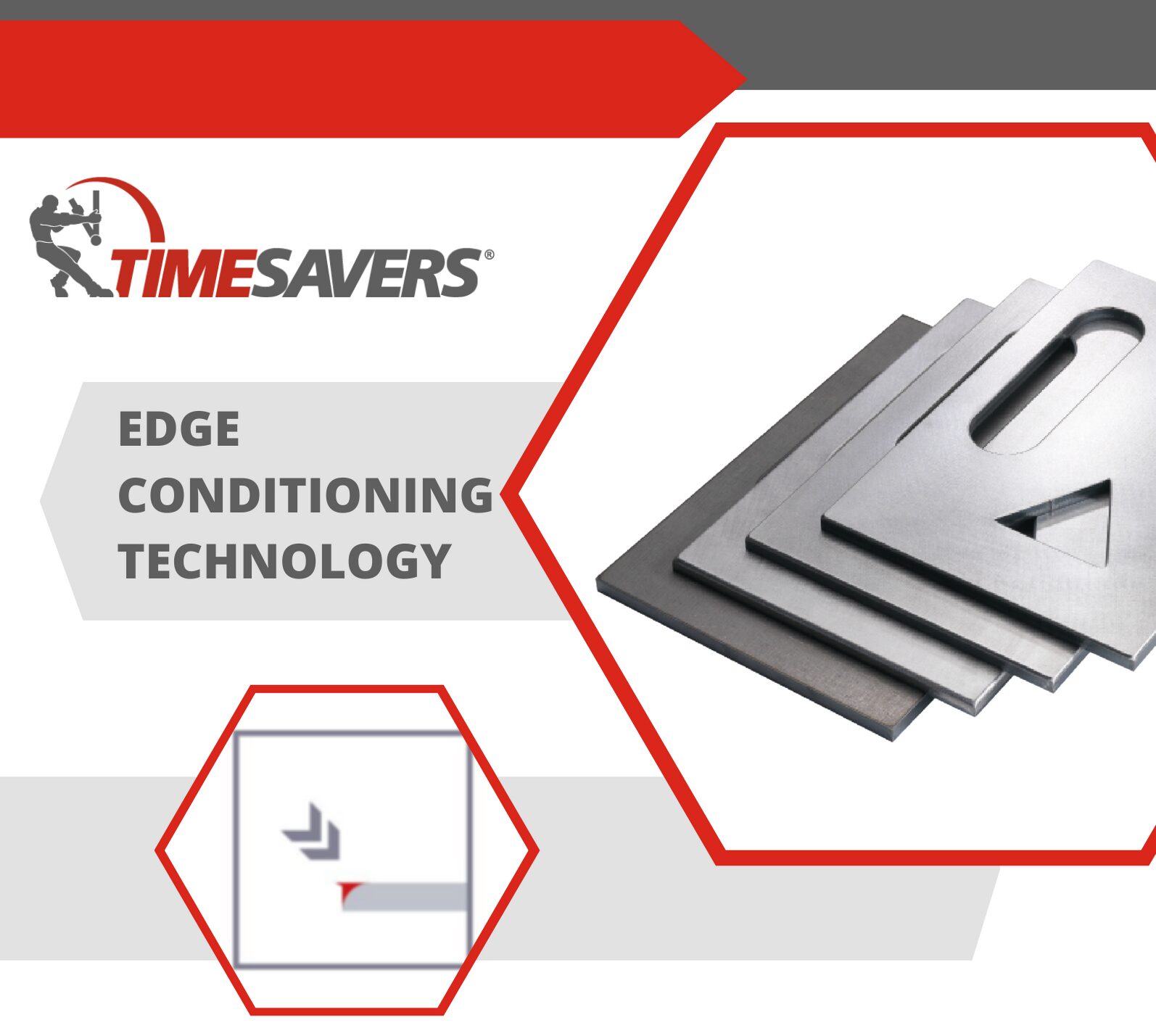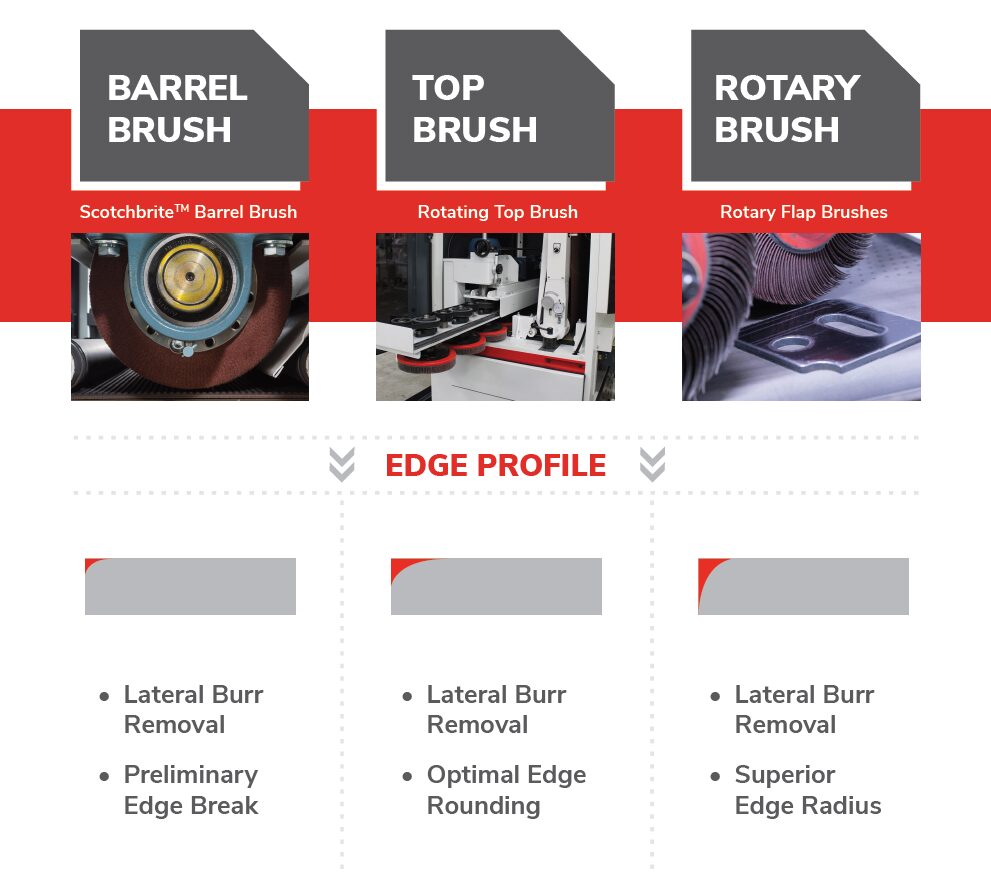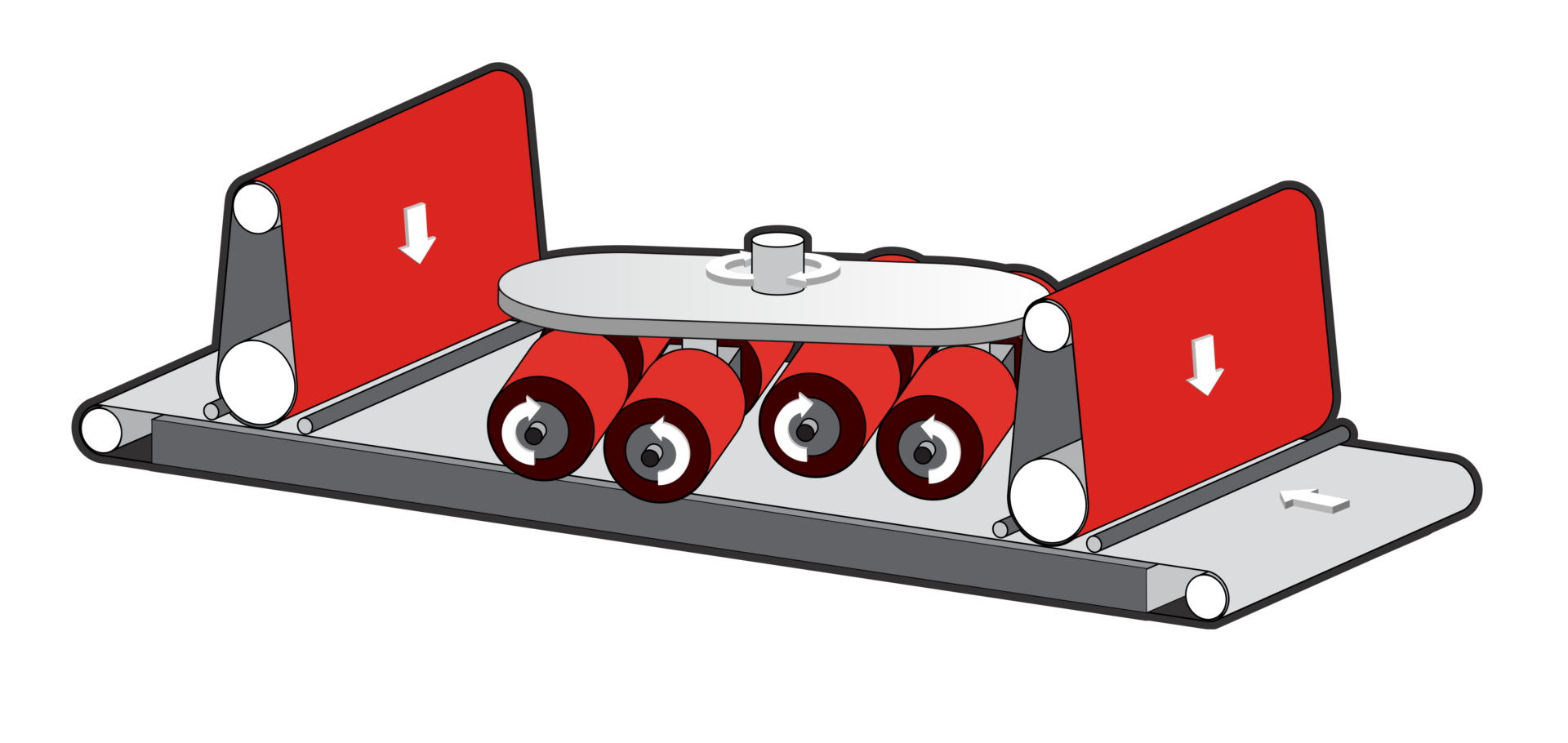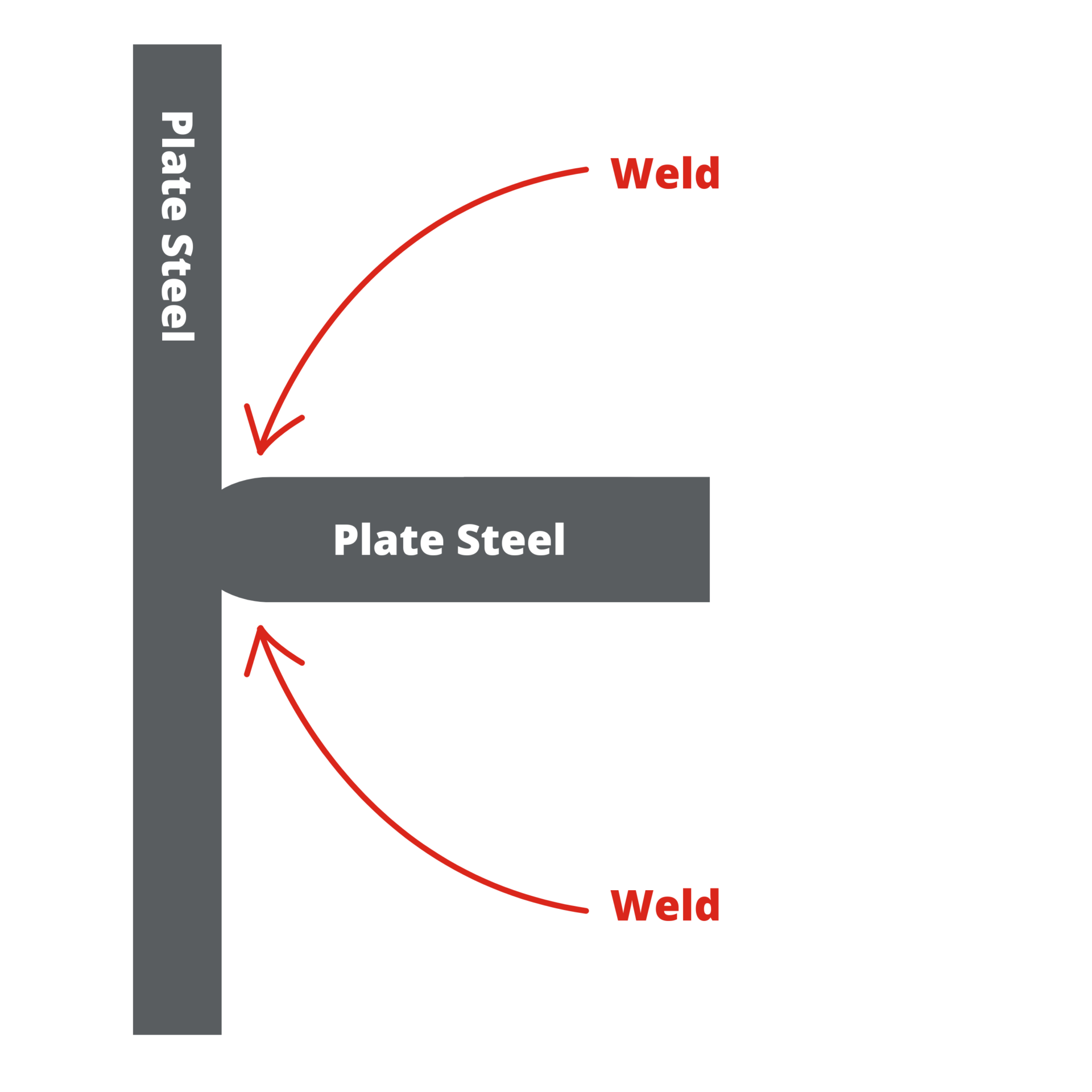Edge Conditioning Technologies Guide

In the world of manufacturing, precision and quality are crucial to creating end products. One crucial aspect is edge treatment and deburring. Proper deburring not only enhances the aesthetics of the final product, but also plays a vital role in improving safety, paint adhesion, and weld preparation. Read below to learn about the various technologies and methods for achieving different edge conditioning finishes with a Timesavers metal finishing machine.

Preliminary Edge Break: Scotch-Brite™ Barrel Brush
This method focuses on edge breaking and the removal of lateral burrs during the deburring process by utilizing a widebelt and employing a Scotch-Brite™ barrel brush for removing the secondary burr for effective surface conditioning. The removal of secondary burrs with barrel brushes are effective for safety, paint adhesion, and weld prep. Barrel brushes have the ability to:
- Remove Secondary (Lateral) Burr
- Surface Condition using the Barrel Brush(es)
- The barrel brush hits the leading edge when it rotates with the feed of the conveyor belt
- The barrel brush hits the trailing edge when it rotates with the feed of the conveyor belt.
- When the barrel brush oscillates, it conditions the side edges of the parts.
- With a dual brush configuration, the barrel brushes will counter-rotate to hit all 4 sides of the part.
The 12 Series (configuration ending in –04), 22 Series (configuration ending in –04 or –044), LYNX, PUMA and Trident (head designations of ‘B’), utilize this technology to provide preliminary edge breaking.


Optimal Edge Rounding: Top Brush
Top brush technology creates optimal edge rounding for metal parts. This technique is used by the Timesavers Compact 9 Series and 22 Series EdgeMaster. In this machine series, the first drum head to removes the primary burr, the top brush conditions the edge and removes the secondary burr, and the (optional) third drum head reintroduces a linear grain finish. Top brush machines round the edge of the parts up to 1mm. The Compact 9 Series and 22 Series EdgeMaster utilize this technology, providing edge rounding, and improved results compared to the barrel brush finish.


Superior Edge Radius: Rotary Brushes
The 32 Series and 42 Series Rotary Brush machines are designed to achieve an edge radius of 1-2mm, ensuring the highest level of precision. These advanced systems create a uniform finish on parts, meaning 360 degrees of consistent edge radiusing, ideal for all parts entering a secondary process. Typically, a radius of .3-.5mm is sufficient for most companies, a 1-2mm edge radius that the Rotary Brush machines provide is crucial to secondary processes such as paint adhesion, powder coating, weld preparation and other surface treatments to create a rounding that sticks to the material applied to the part. The Rotary Brush Series utilizes this technology, providing the most superior edge rounding, and improved results compared to, not only barrel brushes, but top brushes as well.


Factors Influencing Metal Finish:
To achieve the desired finish, manufacturers must consider various factors, including feed speed, head speed, abrasive products, sanding pressure, head type, drum durometer, and the choice between wet and dry processing. These machine parameters play a crucial role in achieving the desired finish.
Industry-Driven Edge Conditioning:
The demand for edge conditioning has increased in industries such as aerospace, medical device and food processing. The desire for edge conditioning is industry-driven due to advancing paint adhesion, safety, and weld preparation techniques.

Contact the Edge Conditioning Experts at Timesavers
In the competitive landscape of manufacturing, paying attention to details like edge conditioning can make all the difference. From a preliminary break to optimal edge rounding, to a superior edge radius, the various deburring methods are a testament to Timesavers continued commitment to quality, precision and innovation.
